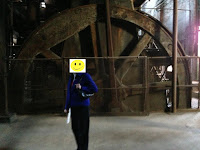There is no argument that Tennessee Williams was a very creative, unique man. Said to have been the most important American playwright ever, Thomas Lanier "Tennessee" Williams was born in Columbus, MS on March 26, 2011. His Southern ties served as inspiration for years to come in his many hits - A Streetcar Named Desire, Cat on a Hot Tin Roof, The Glass Menagerie, The Rose Tattoo and more. Don't we all know a Blanche?!? Or maybe we girls are all a little bit of Blanche ourselves.
Tennessee was born in Columbus and had a genteel upbringing. His father was a shoe salesman and had rather famous family including Tennessee's first governor and first senator. Some members were the Sevier family (anyone ever been to Sevierville and Sevier County on the way to the Smoky Mountains?). He was also related to many presidents (both Adamses, Cleveland, Taft, Coolidge and 9 more) and other authors (Ralph Waldo Emerson, Nathaniel Hawthorne, Herman Melville, Truman Capote). His mother was of Germanic lineage (maternal side), and her father was the rector of St. Paul's Episcopal Church in Columbus, MS when Tennessee was born.
 |
| Tennessee Williams |
 |
| Rose, their mother - Edwina, & Tennessee |
Tennessee was VERY close with his sister, Rose, and even had a play named The Rose Tattoo for which he won a Tony Award. She had mental problems and, after medical treatment that didn't work, she had a lobotomy and had to be institutionalized for the rest of her life, which he paid for. There are stories that his father was distant and abusive. He had a younger brother, Dakin, with whom he seemed to have a conflicting relationship - close at times, distant at others. Many of their life experiences show up in his writings. Sad.....
The 135-year-old childhood house has been restored and is on the National Register of Historic Places. It is definitely worth a visit. Admission is FREE!! and Mrs. Virginia, the curator, is so friendly and has been involved personally in the events and restoration.
 |
| Tennessee's upstairs bedroom |
 |
| Downstairs parlor |
There are many other historical areas in the city you can visit. Go see Mississippi University for Women's campus - gorgeous!! There is a spring pilgrimage of the Historic Homes (many are open year-round), 3 Blues Trails Markers, and other monthly events.
For more information, go to www.columbus-ms.org. Columbus is a sweet, southern town with a LOT of history.
"Home is where you hang your childhood, and Mississippi to me is the beauty spot of creation, a dark, wide spacious land that you can breathe in." Tennessee Williams, 1950s























